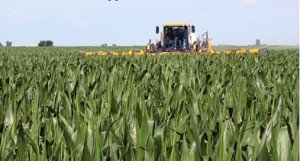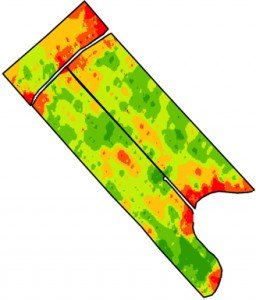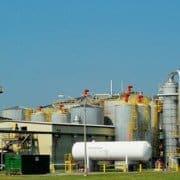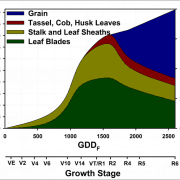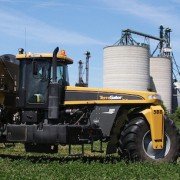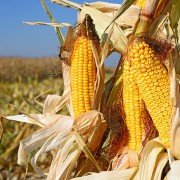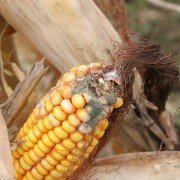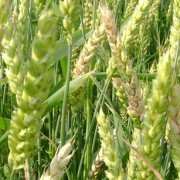Late season nitrogen application
 Late season nitrogen application has been a hot topic amongst farmers and uptake in this practice has increased in recent years. The expense and environmental impact has made growers think differently about nitrogen application.
Late season nitrogen application has been a hot topic amongst farmers and uptake in this practice has increased in recent years. The expense and environmental impact has made growers think differently about nitrogen application.
Weather extremes has also caused growers to change the way they apply nitrogen to mitigate loses from excessive rainfall when applying all their nitrogen ahead of planting.
Late N application allows for flexibility when rain events delay a conventional side dress application at knee high corn. Many growers are now investing in high clearance sprayers that can deliver N into taller corn than traditional sprayers through coulters or a drop pipe system.
It is well documented that a corn plant has the highest demand for nitrogen after tasseling. Currently most producers are applying their nitrogen ahead of planting, with the planter, or as a side dress application at the four to six leaf stage. Many are doing a combination of all three. Sidedressing has allowed for more nitrogen availability later in season. Since we are unsure of rainfall potential, yield, and the soil nitrate status, splitting nitrogen applications has proven to improve profit potential.
Taking corn yields to new heights is something everyone is interested in, but the economics has to be there. If conditions are right for excessive nitrogen loss or you missed sidedressing on smaller corn, applying N later is a great option. Many high yield contest winners state their high yields are due to timing nitrogen closer to tassel. This is an effective way to increase yield by matching plant uptake to nutrient availability.
Do I need more Nitrogen?
With the large amount of rain we have had in some areas these past few weeks, early season N losses may have occurred. Wet conditions through side-dressing will push applications back and many may be looking to rescue applications later in season. Producers must decide if more nitrogen is needed to get to their yield goal. The best way to do this is to determine how much nitrogen is in the soil. This can be done in a few ways:
- Soil Nitrate test
- Thompsons Soil Solutions test
Nitrogen fertilizer will be converted to nitrate in larger quantities as the season progresses and as soil temperatures increases. Knowing what you applied for a nitrogen source, how much nitrogen you applied, and what the conditions were like after planting will help you make a better informed decision.
Corn response to in-season applications
When applying nitrogen late in season it is important to remember that certain parts of the field where nitrogen was lost (due to ponding, soil saturation, leaching etc.) have already impacted yield and it may not be economical to apply much more nitrogen to those areas. Therefore, variable rate applications throughout the field will be more economical putting nitrogen on areas that will see a yield increase and cutting back on areas where yield has already been lost and probably will not recover.
Many studies have shown though that later season applications (when nitrogen has been lost) will increase yields and have an economical return. One thing to always remember is moisture is needed to move the applied nitrogen into the root zone. If dry conditions persist, then the application will not be as effective.
NDVI and GreenSeeker technology
We know the cost of nitrogen is not cheap and we all want the right amount of nitrogen to be properly placed where it should be in the field for the most economical return and yield increase. One way to do this is through GreenSeeker technology.
![]() GreenSeeker technology has been tested over the past decade through on-farm trials and university research. It has produced results of up to 20% yield increase and up to 10% nitrogen reduction. GreenSeeker is a system that is mounted to a sprayer boom that instantly measures and maps crop vigor.
GreenSeeker technology has been tested over the past decade through on-farm trials and university research. It has produced results of up to 20% yield increase and up to 10% nitrogen reduction. GreenSeeker is a system that is mounted to a sprayer boom that instantly measures and maps crop vigor.
 The NDVI (Normalized Difference Vegetation Index) values that it captures are used as the basis for nitrogen prescription rates. These rates are applied on the fly as the machine is going through the field. This technology can turn standard high clearance sprayers into real time on the go variable rate applicators. It places nitrogen where it should be. It also gives you an NDVI map of your field when completed and this can be used to help direct your scouting efforts, create management zones for soil sampling, compare the farm from different years, and to make better management decisions for your field.
The NDVI (Normalized Difference Vegetation Index) values that it captures are used as the basis for nitrogen prescription rates. These rates are applied on the fly as the machine is going through the field. This technology can turn standard high clearance sprayers into real time on the go variable rate applicators. It places nitrogen where it should be. It also gives you an NDVI map of your field when completed and this can be used to help direct your scouting efforts, create management zones for soil sampling, compare the farm from different years, and to make better management decisions for your field.
Technology and Thompsons Limited
 Thompsons is set up this year for the 2015 season to meet your side-dressing needs whether early or late season of nitrogen application. Thompsons has options for later applications depending on your location.
Thompsons is set up this year for the 2015 season to meet your side-dressing needs whether early or late season of nitrogen application. Thompsons has options for later applications depending on your location.
South Locations:
Our Pain Court location has a 15-row toolbar and GreenSeeker mounted to a Hagi sprayer. 30’’ spacing is available. It is a high clearance machine and can apply nitrogen up to tassel timing. It has the ability to do a straight rate, a variable rate prescription rate, or use the GreenSeeker for applying nitrogen.

Blenheim has a John Deere sprayer with custom drop pipes mounted to a 60’ boom with Precision Applicators available. 30” spacing is standard but adjustments are easily done to accommodate other row widths for growers. This machine is capable of straight rate and variable rate prescription rates.
These machines are able to cover most of our southern locations.
North Locations:
For Hensall, Claussen Farms have a high clearance sprayer outfitted with y-drops and have GreenSeeker available if the grower prefers. They have the ability to do straight rate or variable rate prescriptions. They are located near Brucefield, Ontario. As well McGregor Spray Services outside of Exeter, has a high clearance sprayer with drop pipes to make late N application possible. It is for straight rate only, and Sport Farming Inc. near Varna.
These machines are able to cover a vast majority of our north central locations.
Please contact your local branch for pricing and more information if interested in late season nitrogen application.
Top 5 Sidedressing Questions
#1: How much nitrogen does my crop need?
We all know that you do not want to run short on nitrogen. A general rule is to apply 1 lb of nitrogen for every bushel of yield goal. At times more or less might actually be needed based on loss potential, organic matter release or how much residual soil nitrogen is present. If planning on applying nitrogen late in the season, roughly 100 lbs/ac of nitrogen should be applied early to get the crop to the application timing.
#2: What other nutrients can I apply?
The answer to this question could lie in previous soil tests or plant tissue tests. Looking at a plant tissue test before you begin sidedressing can show you what nutrients may be limiting, and will give you a bit of time to figure out which products to add to UAN. There are many fertilizers that are compatible with UAN. If you are seeing a trend appearing on plant tissue tests or from a soil test, you can address potassium, sulfur, zinc, boron or even manganese at this time.
#3: How should I apply my fertilizer?
It is essential to get the nitrogen as close to the roots as possible to ensure uptake with minimal water. Both the toolbar and drop pipes effectively place the nitrogen in the row on right by the plants roots. These methods are superior to broadcasting dry fertilizers because you will get consistent placement and no damage from fertilizer burning to the leaves.
#4: What is the optimal timing for nutrient application?
Corn requires a large part of its nitrogen from V8-tasseling stage. Nitrogen should be placed around this timing. If drier weather is forecasted, earlier timings are possible as loss will be minimal.
#5: Should I use a stabilizer with my nitrogen?
Much research has shown a benefit to protecting nitrogen from loss. A stabilizer will hold nitrogen in ammonium form longer, thus holding back the nitrogen from turning to nitrates and leaching. This is a bigger concern in lighter soil types.
Sources: http://corn.osu.edu; http://www.omafra.gov.on.ca; http://www.agphd.com.



